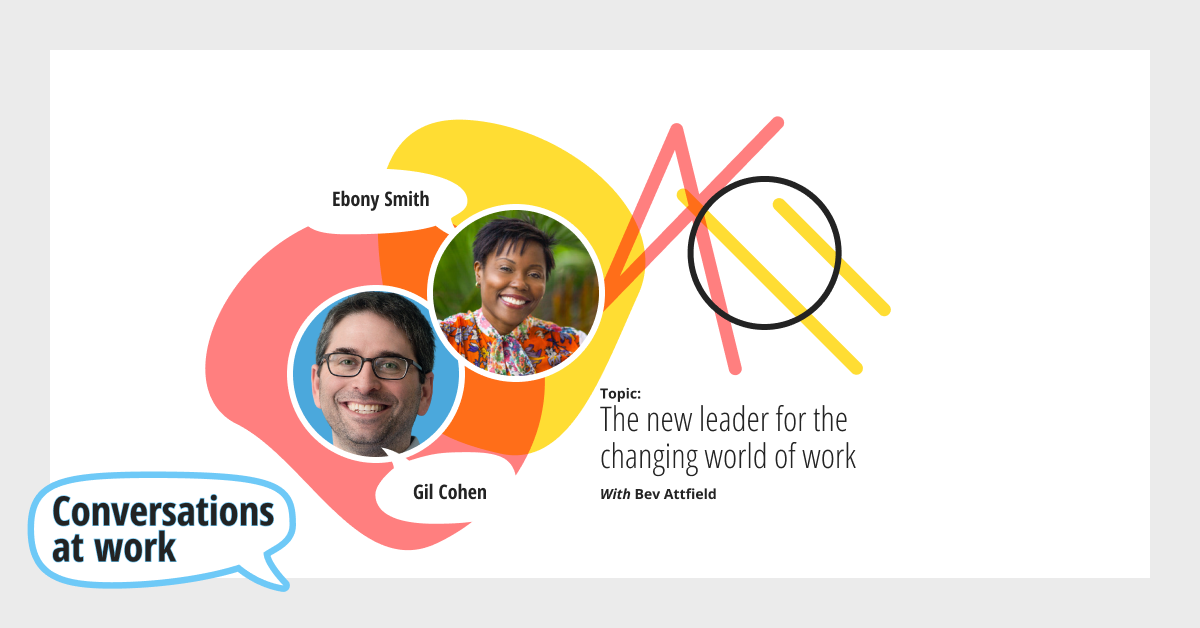
4 min read
Adaptability has always been a critical leadership quality, but the landscape of leadership has had to adapt more in the past year than any other time in recent memory. This new environment has demanded leaders be more self-aware, more communicative, and more intentional with their leadership than ever before.
By Faye Wai
New work frontiers demand a new kind of leader. People who can lead themselves, guide others, and ride fast-paced change. So what does this mean for leaders now?
It’s a perfect question that kicked off our new season of Conversations at Work. In this session, we talked about what’s changed for leaders, how leaders must show up in people-centric workplaces, and how to use the leadership lessons of the past year.
In this meeting about leaders with leaders, we were inspired by Gil Cohen, Founder of Employee Experience Design, and Ebony Smith, President of Ebenum Equation.
What does leadership look like to you? And how about drawing it out on paper? We started with an ice-breaker exercise for us to visually layout what leadership feels like to each of us today.

But what are present-day leadership challenges?
Ebony shared her observations on organization-wide and societal shifts in leadership:
Remember: people have more in common than they have differences.
Focus on the humanized aspect (especially on the mental health front) instead of categorizing people. This allows individuals to be authentic but united. Leadership requires full-spectrum thinking; it’s all about figuring out the common goal and curating great public discourse.
Gil, an expert in organization-wide psychological safety, talks us through individual and human-centric prioritization. How are leaders continuing to take risks and make mistakes?
It all comes down to setting boundaries. Leaders, have an honest conversation and bring humility into all interactions. We all have more in common than differences, and one might be close to heart. We’re all tired of Zoom meetings.
What do leaders need to help themselves, their people, and their business move forward?
Ebony says we should collect signals and catalog them to help us understand what’s happening at every level of an organization, and beyond. Gil believes we must reframe the role and purpose of organizations beyond their capitalist origins, so that these places support and help human experience and growth.
Leaders who hone these skills will be at the forefront of creating human-centric, attentive, and authentic organizations. Tune into the full discussion below to get all the insights 👇
About Conversations at Work
Leaders, we’re here with you.
Leaders need all the help they can get. That’s why leadership is our focus for Season 2 of Conversations at Work. So much has changed at work this past year, with themes of inclusion, remote work, authenticity, psychological safety, and more becoming pressing for leaders. But how are we helping leaders make sense of this and take action? It starts with talking, learning, and sharing with others. This is a space for leaders to do just that—let’s come together and then get to work.
Next event
How do we ensure individual, team, and business success when all or some of our people are remote?
Join us on March 11 @ 10AM PT where we discuss everything we need to know about Remote and hybrid team leadership.
Read more by
Faye Wai
Jostle’s employee success platform is where everyone connects, communicates, and celebrates at work. Find out more at jostle.me. © 2009–2024 Jostle Corporation. All rights reserved.